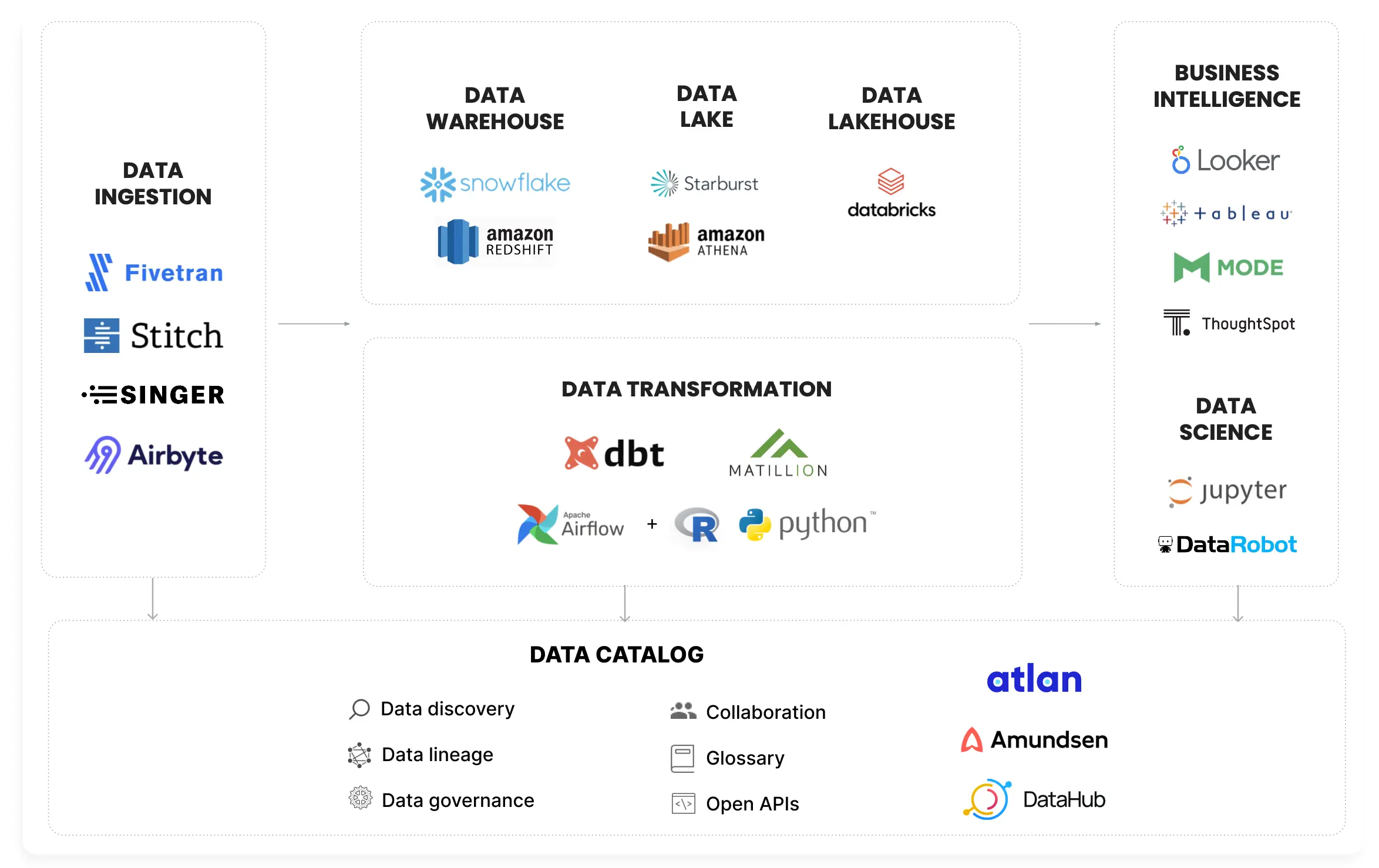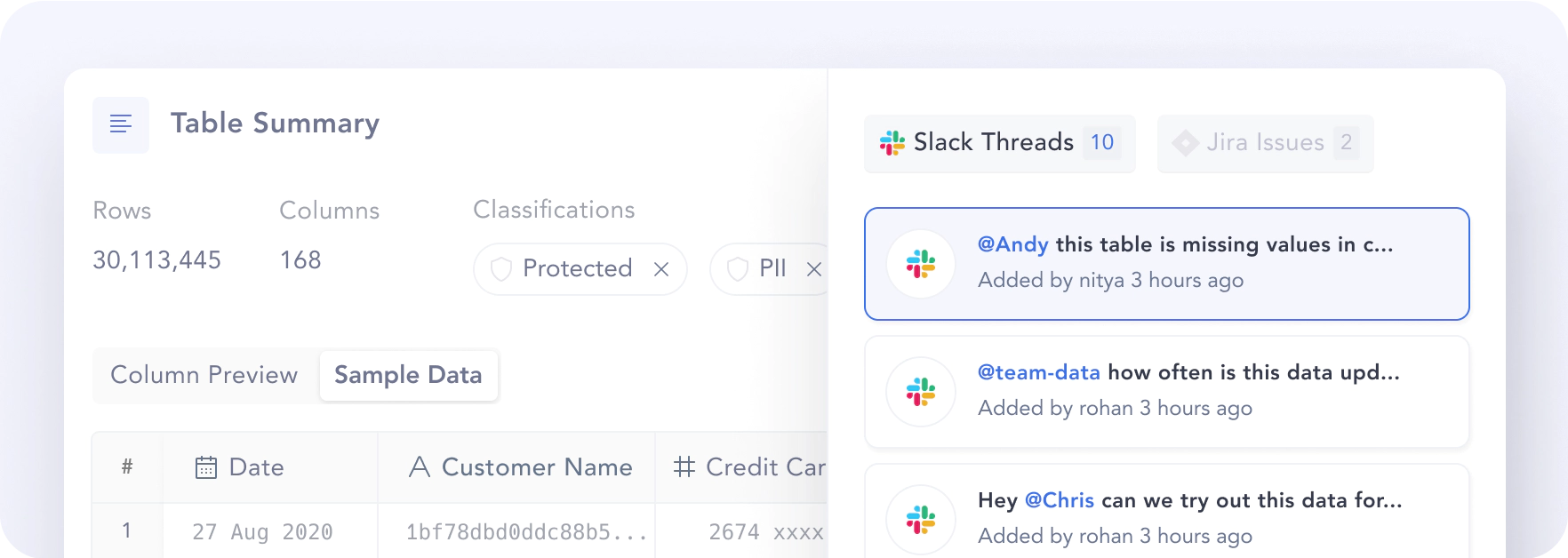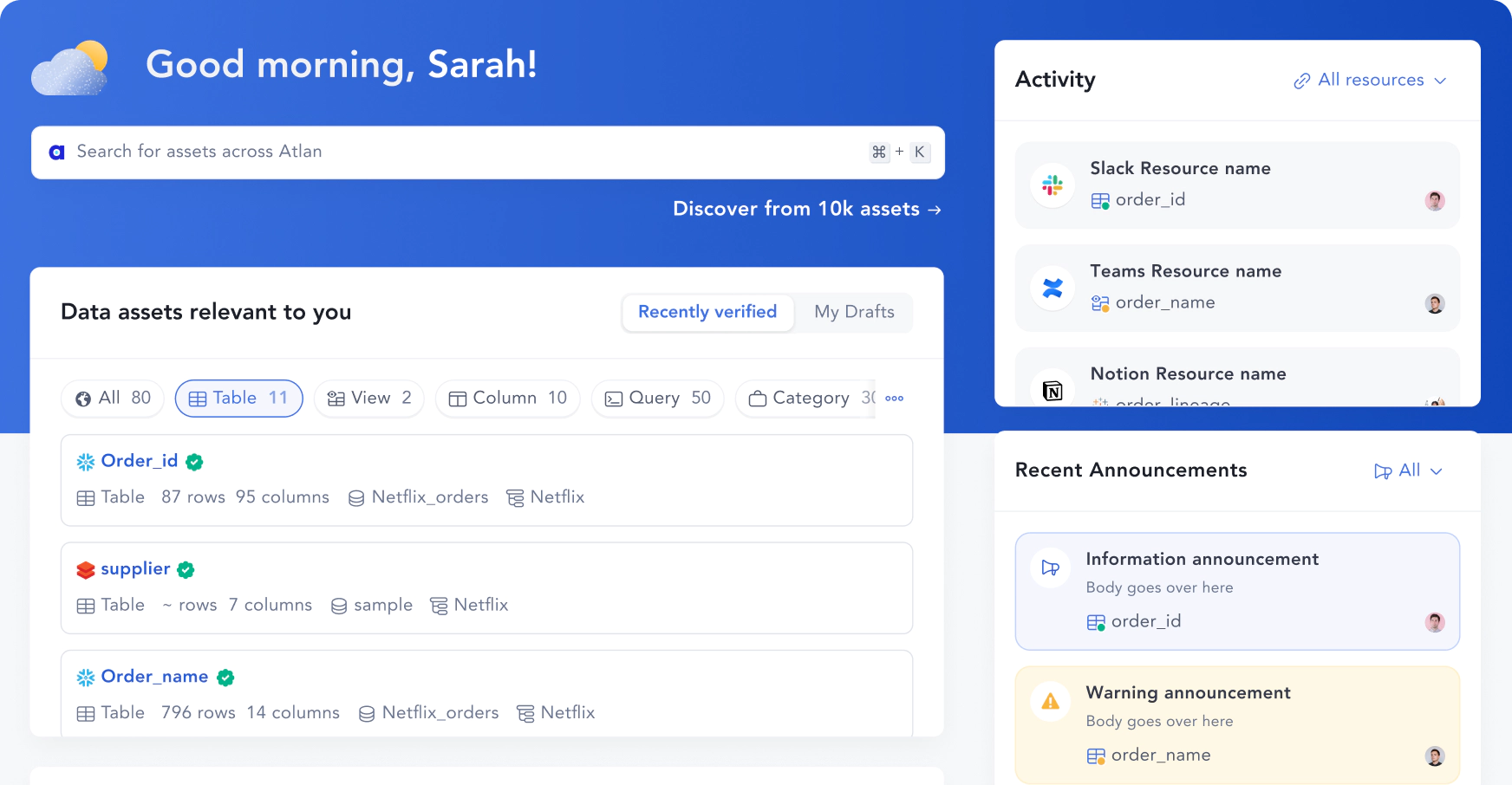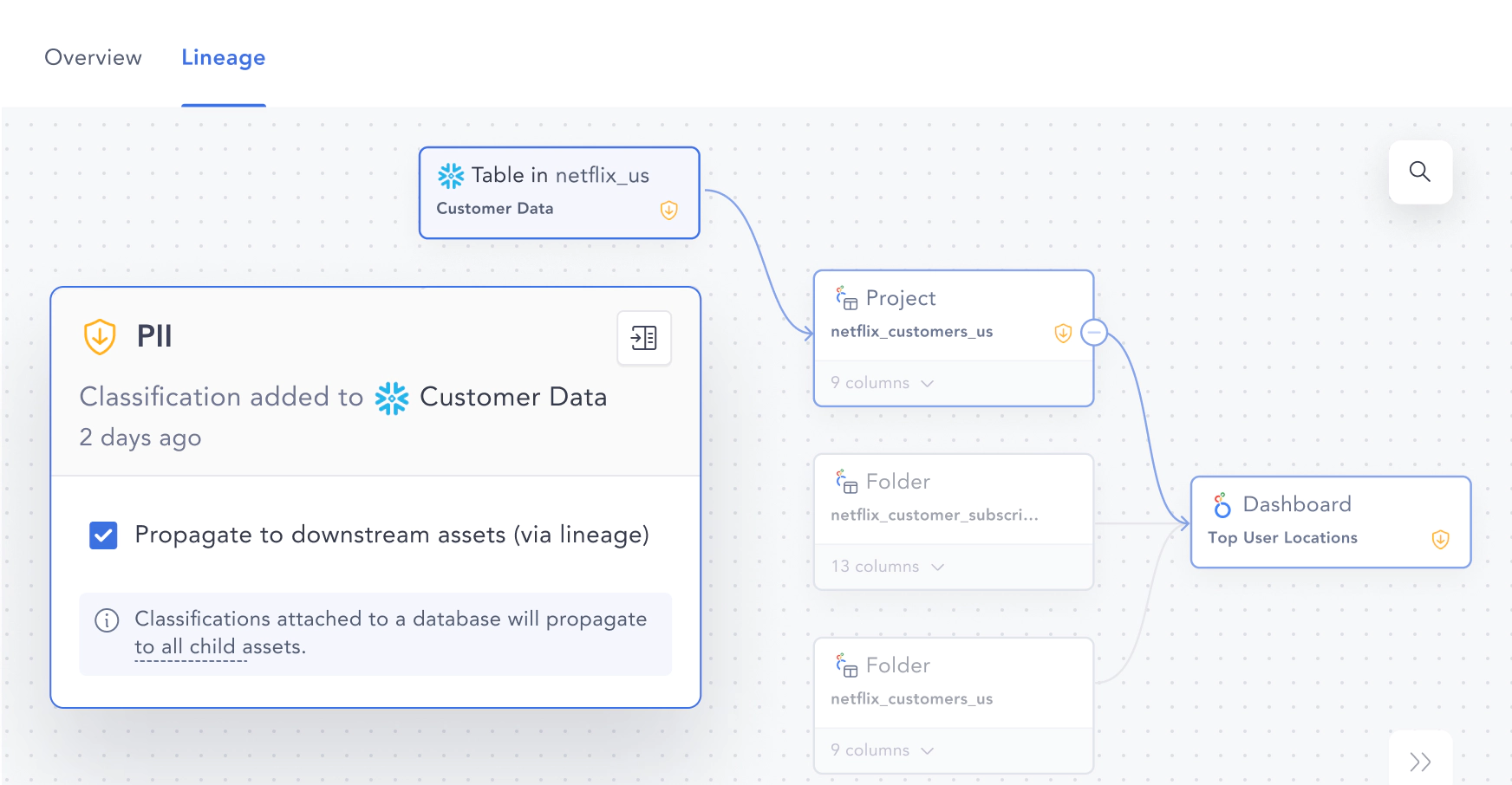Enterprise Data Governance: Basics, Strategy, Key Challenges, Benefits & Best Practices

Share this article
What is an enterprise data governance program? #
Enterprise data governance program is foundational to being a data-driven enterprise. which ensures data is accurate, usable, and accessible. enterprise data management will quickly descend into chaos without effective data governance in place.
A well-maintained enterprise data governance program helps large businesses make sense of the vast amounts of data they have at their disposal and maximize its value. But only a small cohort of enterprises are currently succeeding in this area.
Research from Accenture has found that 81% of enterprises still don’t have a data strategy. Even more alarming is that only one-third of firms trust their data enough to use it effectively and derive value from it. With the proliferation of Big Data in the enterprise, a lack of proper governance will lead to mayhem and widespread mistrust of the data at hand.
Table of contents #
- What is an enterprise data governance program?
- Challenges with enterprise data management
- Challenge #1: Disparate data sources and complex data stacks
- Challenge #2: Tribal knowledge is hidden within certain roles or teams
- Challenge #3: Fragmented and redundant data management
- Challenge #4: Slow-moving approvals and access
- Challenge #5: Security risk and failure to comply with privacy laws
- Enterprise data governance underpins data success
- Enterprise data governance with Atlan
- Enterprise data governance: Related reads
Challenges with enterprise data management #
The biggest challenges of enterprise data management that can be solved with data governance include:
- Disparate data stacks
- Siloed tribal knowledge
- IT redundancy/fragmentation
- Slow-moving processes
- Cybersecurity/privacy risks
Challenge #1: Disparate data sources and complex data stacks #
Enterprise businesses often house data sources across multiple domains and operating units. And, with the frequent addition of new technologies and evolving data infrastructure, the number of data sources is constantly increasing.
This rapid pace of data collection and technology adoption inevitably leads to data silos in the absence of a strong enterprise data governance strategy. The technical challenges caused by silos also extend to the data stack itself.
Enterprises attempting to solve this challenge tend to compile data and metadata from a variety of siloed tools and store this information in a standalone data governance tool. Such misguided efforts to unite the data stack actually result in more silos and a significant lack of context from the other tools living within the enterprise data ecosystem.
Solution: Enterprise data governance helps unite data silos #
Enterprises need a unified data governance framework that brings all of their disparate data sources into a single source of truth. Large businesses are beginning to favor data governance frameworks that include federated computational governance, a system that incorporates feedback loops and bottom-up input from data users to bring more flexibility to data governance.
To achieve this, enterprises need to leverage intelligent technology capable of automating all of the tasks required to bring context to and unite the data stack, including:
- Data discovery
- Data quality checks
- Data profiling
- Data cataloging
- Data lineage
- Data glossary creation
Netflix provides a powerful enterprise-level example of a fully integrated data governance infrastructure that leverages metadata for the auto-discovery of datasets, auto-analyzation of database tuning, and auto-optimization of datasets when opportunities are identified. In the spirit of community-led, bottom-up data governance, the company is also working on a “centralized and pluggable policy engine that would allow their stakeholders to customize data policy rules for all datasets.”

Enterprise data governance systems help prevent data silos. Source: Atlan
Challenge #2: Tribal knowledge is hidden within certain roles or teams #
Another silo problem associated with Big Data in the enterprise is the knowledge silo, aka “tribal knowledge.” If you’ve ever been on the hunt for a specific dataset only to be told that the only person who knows is Sarah in marketing, then you’ve encountered a tribal knowledge roadblock.
Many businesses have a select group of people who work closely with their data assets and therefore hold all the answers to understanding their full context. In other words, the rest of the organization — nontechnical users — have no insight into where the data comes from, its quality, its value, etc. There is an urgent need for better data communication.
Solution: Enterprise data governance fosters a culture of shared data knowledge #
Data governance isn’t just about updating processes and technologies, it’s also about a mindset shift for your people. An effective data governance program should foster a data culture that enables and rewards data sharing across departments. After all, the full value of data can only be unlocked when everyone has access to it for the purpose of their unique role.
This is exactly the epiphany Airbnb had a few years ago when they realized each team and function had its own tools, dashboards, tables, and charts that weren’t being shared. To scale tribal knowledge and encourage a culture of self-service, the company worked with its staff to build the Airbnb Dataportal, a data search engine powering data exploration, discovery, and governance that enables employees to make smarter business decisions.

Modern data governance facilitates seamless data collaboration across teams and tools. Source: Atlan
A Guide to Building a Business Case for a Data Catalog
Download free ebook
Challenge #3: Fragmented and redundant data management #
It’s quite inefficient for data practitioners across the enterprise to have to perform the same tasks day in and day out, each time for a different user. Many data scientists and engineers spend a great deal of time preparing data for analysis, working with the same sources over and over to deliver data assets and report to the various departments that request them.
Imagine the time and money that could be saved if companies were able to systematize and automate these tasks so central IT teams could focus their efforts on higher-value strategies.
Solution: Enterprise data governance fosters a culture of communication and knowledge #
Data governance ensures data management efforts aren’t repeatedly and/or unknowingly duplicated across an organization by addressing foundational concerns, such as:
- How can we reduce the number of errors in our database?
- Where are the opportunities to streamline our data management efforts?
- Why isn’t everyone defining and interpreting data in the same way?
- What are the relationships between various assets?
- How can we protect and reuse assets?
Enterprise data governance is about defining a unified way to govern data assets to reduce overall data quality issues so that all data users have greater trust in the data at their disposal. This, in turn, will also free up IT bandwidth since they don’t have to dedicate so much time to making sense of jumbled data sets.
The IT staff of the Ohio Department of Transportation (ODOT) used to spend a lot of time scrubbing data to meet federal reporting requirements. They realized that data was the third most expensive asset they maintained after roads and bridges.
To solve this problem, they partnered with Data Transfer Solutions to develop a tailored data governance framework and program to establish rules and guidelines for all enterprise data activities. Adopting a unified set of data standards has allowed ODOT to greatly reduce the amount of time and effort required to assimilate data by increasing data quality and consistency.

Modern enterprise data governance tools gives you a 360° view for data assets, right from the data source to dashboards. Source: Atlan
Data Catalog 3.0: The Modern Data Stack, Active Data Governance, and DataOps
Download ebook
Challenge #4: Slow-moving approvals and access #
Enterprise organizations must also deal with the red tape and bureaucracy that comes along with being a behemoth. Layered hierarchies and the sheer size of teams result in the slow movement of approvals across the system, leading to drawn-out wait times when working on data projects.
Solution: Enterprise data governance accelerates the rate of innovation #
Data governance is about making it easier for data users to find, evaluate, and confidently pick the best data for their day-to-day needs. Top-down, resource-intensive governance programs simply don’t allow that to happen.
An intelligent democratization layer helps enterprises stay agile and adaptive in the way they manage data. Check out this success story of how a Fortune 500 company established the foundation of a data-driven enterprise by creating AI-driven data governance protocols, unifying its data stack, and reducing its reliance on tedious email reporting.
A Demo of Atlan enterprise data governance use cases
Challenge #5: Security risk and failure to comply with privacy laws #
Compliance concerns are what many people jump to when considering the challenges data governance addresses. With the average cost of a data breach rising to $4.24 million in 2021, maintaining proper data security remains a core data management focus for enterprises across all industries.
In addition to data security, data privacy also falls under the purview of data governance. Without strong governance, businesses run the risk of failing to comply with the increasingly stringent data privacy regulations being put in place across the globe. For large enterprises, the penalties can be severe: Amazon was fined a whopping $888 million for violating GDPR.
Solution: Enterprise data governance ensures compliance with regulations #
Unified data governance essentially gives the enterprise a bird’s-eye view of all data activities. This allows data leaders to manage who has access to data as well as monitor who has modified data to reduce potential security breaches.
For data users, modern data governance provides automated guidance that helps them establish and follow clear processes for structured creation, usage, and deletion of data. Such guardrails prevent those “small slip-ups” that can have a long-lasting negative impact.

Enterprise data governance tools helps automate privacy and security measures, for instance, Atlan automatically propagates PII classifications downstream using lineage. Source: Atlan
Enterprise data governance underpins data success #
As you can see, data governance is fundamental to the success of virtually all data activities within the enterprise. Enterprise data governance helps organizations move efficiently and securely as they find new ways to derive value from a large amount of data within their data stores.
Check out Data Governance 101 for more information about the compounding positive effect that data governance has on the enterprise.
Enterprise data governance with Atlan #
If you are evaluating and looking to deploy best-in-class data access governance for the modern data stack without compromising on data democratization? Do give Atlan a spin.
Atlan is a Third-generation data catalog built on the premise of embedded collaboration that is key in today’s modern workplace, borrowing principles from GitHub, Figma, Slack, Notion, Superhuman, and other modern tools that are commonplace today.
Enterprise data governance: Related reads #
- Data Governance in Action: Community-Centered and Personalized
- Data Governance and Its Importance in the Modern Data Stack
- Data Governance Framework — Examples, Templates, Standards, Best practices & How to Create One?
- Snowflake Data Governance — Features, Frameworks & Best practices
- Open Source Data Governance Tools - 7 Best to Consider in 2023
- Data Governance Policy: Examples, Templates & How to Write One
- 7 Best Practices for Data Governance to Follow in 2023
- Benefits of Data Governance: 4 Ways It Helps Build Great Data Teams
- Data Governance Roles and Responsibilities: A Quick Round-Up
- Key Objectives of Data Governance: How Should You Think About Them?
- The 3 Principles of Data Governance: Pillars of a Modern Data Culture
- A Guide to Gartner Data Governance Research — Market Guides, Hype Cycles, and Peer Reviews
- 5 Popular Data Governance Certifications & Trainings in 2023
- 8 Best Data Governance Books Every Data Practitioner Should Read in 2023
- Automated Data Governance: How Does It Help You Manage Access, Security & More at Scale?
- Data Governance and Compliance: Act of Checks & Balances
- Data Governance vs. Data Management: What’s the Difference?
- Enterprise Data Governance — Basics, Strategy, Key Challenges, Benefits & Best Practices
Share this article










